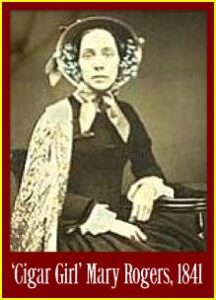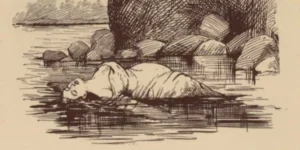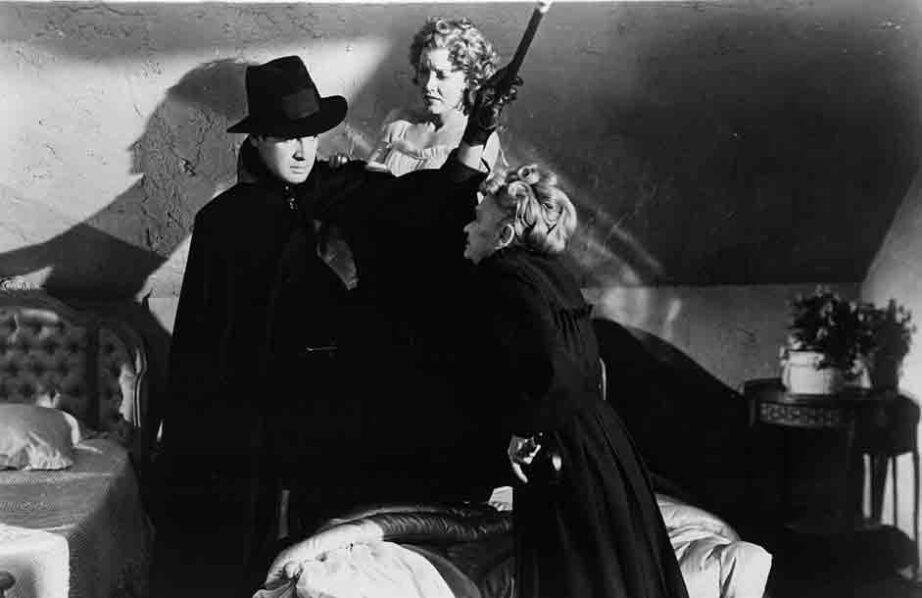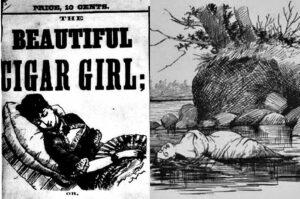The mysterious murder of Mary Rogers, known in the penny press as the “Beautiful Cigar Girl,” in the summer of 1841 remains one of New York City’s most infamous unsolved cases. Even Edgar Allan Poe took a crack at solving it, yet while her ghost is said to have visited the numerous suspects that the press circled after the beautiful young lady’s death, the truth of the grisly crime is still as murky as the Hudson River waters where her corpse was found.

In 1838, John Anderson, who owned a tobacco shop on Broadway in Lower Manhattan, hired Mary Rogers to stand at his counter purely to allure gentleman customers. It worked, and the dark haired beauty who was described as ”ethereal and hypnotically pleasing” made Anderson’s Tobacco Emporium one of the most popular in town. It had a regular clientele of notable figures like Washington Irving and, it’s stated, Poe himself, as well as a cavalcade of journalists, which would help to get her gruesome end its high profile in the press.

One day in October of 1838, Rogers went missing. Two weeks later, she suddenly reappeared, and many thought that Anderson had staged the disappearance for publicity. Rogers’ adoring fans swarmed the shop, and she soon felt overwhelmed and left to work in her mother’s boarding shop. Yet in July of 1841, she went missing again, and this time two men on the shore of New Jersey spotted her floating near Sybil’s Cave.


